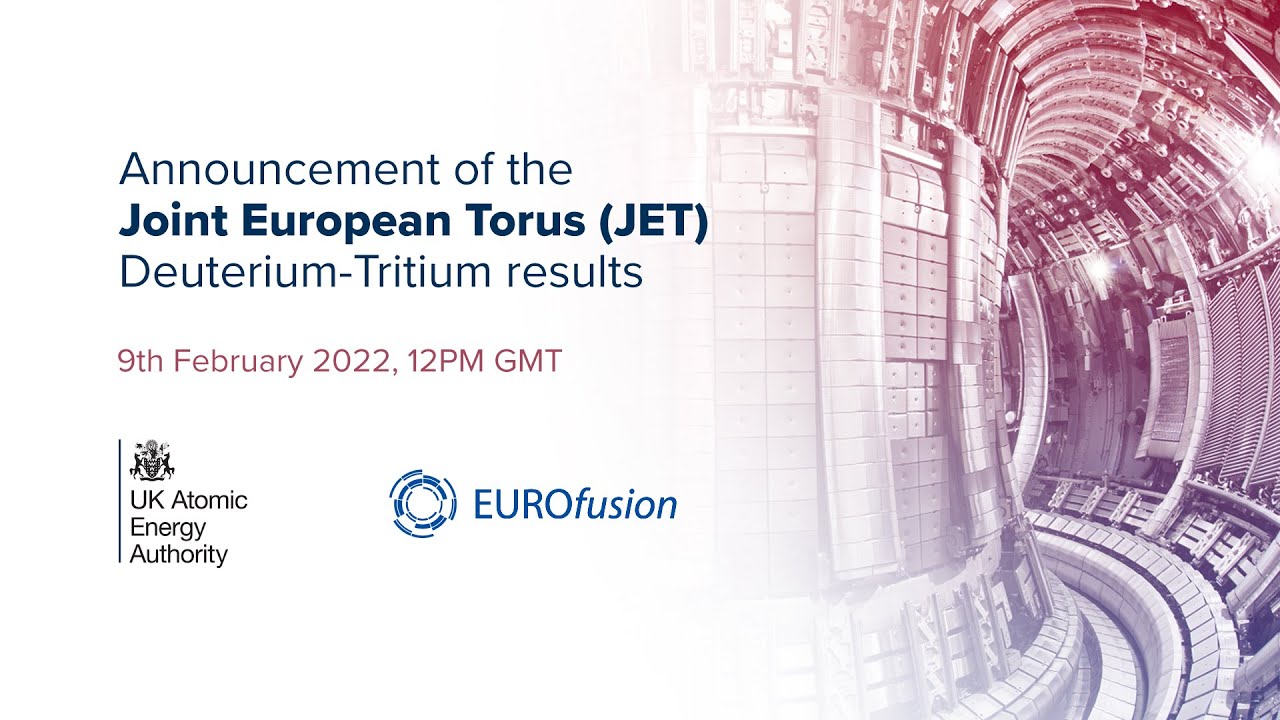The Joint European Torus (JET), located at the Culham Centre for Fusion Energy in Oxfordshire, England is an experimental nuclear fusion reactor of the tokamak design. It was designed to develop and test the means of confining and heating a plasma of hydrogen isotopes to achieve steady-state nuclear fusion. The reactor began operation in 1983 and was upgraded in a series of steps until, in 1991, experiments with deuterium-tritium fuel were begun, reaching a fusion energy gain factor of Q=0.67, a world record (Q=1 represents “scientific breakeven”, which JET was not intended to reach), generating 16 megawatts of fusion power while consuming 24 megawatts to heat the plasma.
Between 2009 and 2011, JET was shut down and many parts were rebuilt to incorporate design concepts from the International Thermonuclear Experimental Reactor (ITER) now under construction in France. In December, 2021 tests of the new design using deuterium and tritium began, with the reactor producing 59 megajoules of energy in a five second pulse at Q=0.33. The modifications to prove the ITER components reduced the Q factor, but demonstrated that the much larger ITER should be able to achieve its goal of Q=10. Unlike ITER, which will use superconducting magnets, JET uses conventional copper wire in its magnets which limits its maximum running time to five seconds due to ressitive heating in the magnet coils. This is, however, ten times the time scale of instabilities in the burning plasma and demonstrates that a superconducting magnet machine would achieve a long-term steady-state burn.
This conference, held at the JET facility on 2022-02-09, reports results of the most recent JET deuterium-tritium runs and discusses their significance for the ITER project.
